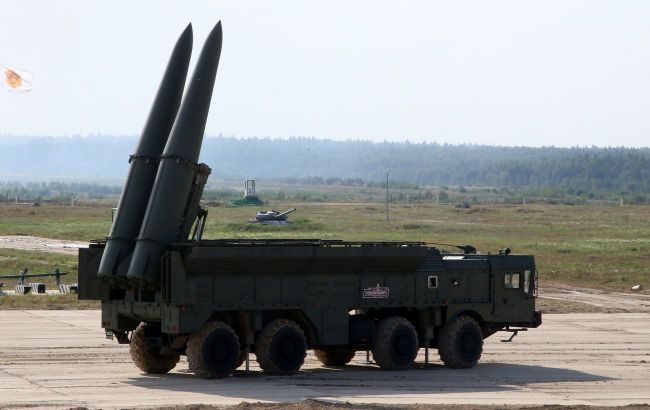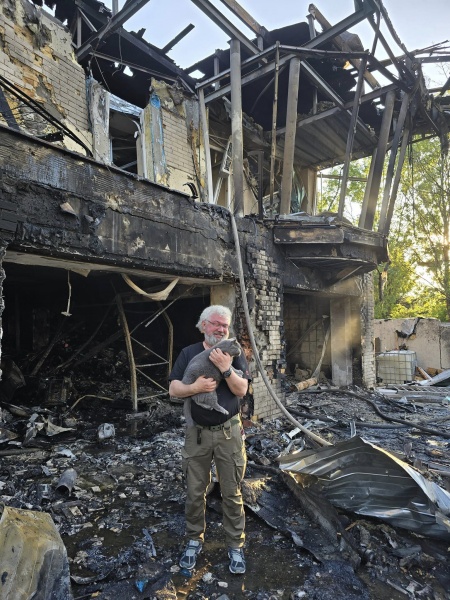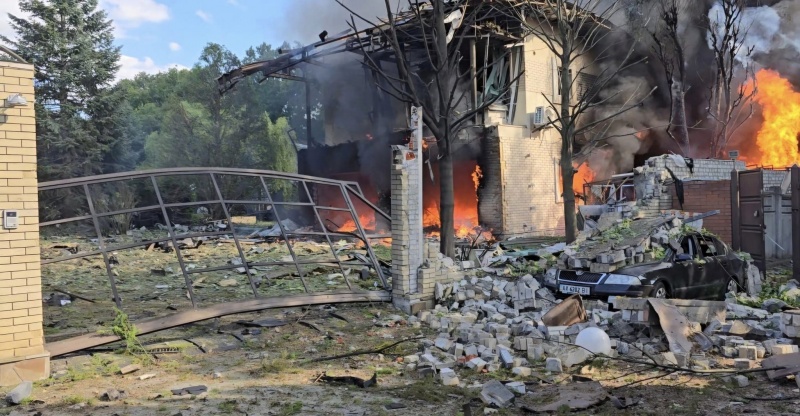Russian Iskander missiles and cluster munitions threat looming over Kharkiv
 Photo: Russia strikes Kharkiv with Iskander cluster missiles for the first time (Getty Images)
Photo: Russia strikes Kharkiv with Iskander cluster missiles for the first time (Getty Images)
Russian troops actively attacked Kharkiv with ballistic missiles throughout the day yesterday. For the first time, the Russians used a rocket with a cluster munition to attack the city. Russia may have changed its tactics and now Kharkiv residents face the threat that Russia's Iskanders will be used much more often.
Read more about the Russian threat to Kharkiv and how to solve the problem in the RBC-Ukraine article.
Russian attacks on Kharkiv with Iskanders and missile with cluster munition
On July 25, Russia struck Kharkiv with 5 ballistic Iskander missiles, one of the missiles had a cluster warhead. Thus, the first attack took place at 5 a.m., Russia fired two missiles. Later, at 12:15 p.m., the Russians launched a double missile attack on Kharkiv, and at about 2:20 p.m., a third attack took place. After 5 p.m., Russian aircraft launched an unmanned aerial vehicle. As it became known, a Russian guided aerial bomb destroyed the house of businessman and volunteer Yurii Sapronov. The explosion caused minor injuries. The businessman himself was not at home at the time of the Russian strike; he posted a photo on Facebook of himself and his cat standing against the background of the destroyed house.

Photo: Russians destroyed the house of a Kharkiv businessman and volunteer (facebook.com/sapronov.yuri)

Photo: Russians destroyed the house of a Kharkiv businessman and volunteer (facebook.com/sapronov.yuri)
Kharkiv Mayor Ihor Terekhov noted that the Russian attacks occurred after a relatively long lull. According to him, Until that day, there was a certain calm in the city, but still tension was felt.
In general, the Russian attacks hit not only private houses but also office buildings where the Swiss humanitarian demining center was located, and the organization's vehicles were also damaged. In addition, an industrial enterprise was also attacked. The peculiarity of this attack was that the Russians struck again at the place where they had already struck before, but this time with a rocket with cluster munitions. Volodymyr Tymoshko, the head of the Kharkiv regional police, said that the attack was deliberate, and intended to cause the most damage to the State Emergency Service of Ukraine, medics, and police. However, law enforcement officers and rescuers left the scene of the Russian attack 10 minutes before the second attack.
“However, Russians hit with a cluster bomb, the cluster bomb scattered over a large area and injured people who were passing by a private enterprise on the street or were in the private sector located nearby,” Tymoshko says.
In total, 12 people were injured in the city during the day as a result of Russian strikes.
Has Russia switched from S-300 to Iskander? How to solve problem
Oleksandr Kovalenko, a military and political observer at the Information Resistance group, told RBC-Ukraine that Kharkiv cannot currently counter Iskanders because the city has no air defense system that can shoot down ballistic missiles.
“They started using Iskanders first of all because they used to fire at Kharkiv with S-300s. But these SAMs are now in the range of M142 HIMARS. And in the Belgorod region, one of these systems that was constantly shelling Kharkiv was destroyed. So, the Russians switched to using Iskanders. They have a much longer missile range, and therefore they may soon switch exclusively to shelling Kharkiv with either Iskanders or North Korean KN-23, which is an analog of the 9M723,” Kovalenko says.
In his opinion, the Russian threat to Kharkiv has increased. Russia has now resorted to terrorizing Kharkiv residents using missiles with cluster warheads.
He explains that such weapons are generally used to strike a large concentration of people or equipment.
“For example, a field camp or a parking lot of vehicles, military equipment, etc. Because the cluster munition does not strike pointwise, but over a large area. It's about 1.5-2 or even more kilometers, depending on the height where this warhead is deployed. And it hits the area, covering both buildings and people who are there,” Kovalenko says.
He notes that if such a missile is used in a city, or a settlement, it is a terrorist act. The purpose of such a strike is to kill as many civilians as possible in the target area and damage civilian facilities and infrastructure. Because where these submunitions land, there is a high risk of fires.
The expert points out that, for example, such an Iskander cluster munition has already landed in Odesa more than once. He recalls the Russian ballistic missile strike on the Health Route on April 29. Then Russia struck a civilian area for walking and sports, resulting in dozens of injuries and casualties.
“So I think that the Russians will continue this, realizing that it is risky for us to use the S-300. How to deal with this? They shoot down Patriot ballistic missiles. But the Patriot will not be delivered to Kharkiv until a full-fledged echelon air defense system is formed there, and this is a rather complicated process,” Kovalenko summarizes.
Due to its proximity to the border with Russia, Kharkiv is constantly under Russian fire. The Russians use drones, missiles, and air bombs to strike the city. However, until recently, local authorities have noted a significant decrease in the number of Russian attacks from the S-300. The number of such attacks decreased after our Western partners gave the green light for their weapons to strike Russian territory. However, at the moment, it is only the border regions, in particular Belgorod. At the same time, Ukraine is actively emphasizing the need to strike the rear areas of the Russian Federation to reduce Russia's capabilities and provide adequate protection for Ukrainian cities.
Sources: Kharkiv Mayor Ihor Terekhov and Kharkiv Regional Police Chief Volodymyr Tymoshko, Kharkiv businessman and volunteer Yurii Sapronov, the State Emergency Service of Ukraine, the local news agency Dumka, and an exclusive commentary by Oleksandr Kovalenko, a military and political observer with the Information Resistance group.

